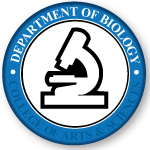Author ORCID Identifier
Document Type
Article
Publication Date
12-31-2022
Publication Title
Mucosal Immunology
Volume
13
Issue
5
First Page
753
Last Page
766
Abstract
An emerging paradigm suggests that gut glycosylation is a key force in maintaining the homeostatic relationship between the gut and its microbiota. Nevertheless, it is unclear how gut glycosylation contributes to the HIV-associated microbial translocation and inflammation that persist despite viral suppression and contribute to the development of several comorbidities. We examined terminal ileum, right colon, and sigmoid colon biopsies from HIV-infected virally-suppressed individuals and found that gut glycomic patterns are associated with distinct microbial compositions and differential levels of chronic inflammation and HIV persistence. In particular, high levels of the pro-inflammatory hypo-sialylated T-antigen glycans and low levels of the anti-inflammatory fucosylated glycans were associated with higher abundance of glycan-degrading microbial species (in particular, Bacteroides vulgatus), a less diverse microbiome, higher levels of inflammation, and higher levels of ileum-associated HIV DNA. These findings are linked to the activation of the inflammasome-mediating eIF2 signaling pathway. Our study thus provides the first proof-of-concept evidence that a previously unappreciated factor, gut glycosylation, is a force that may impact the vicious cycle between HIV infection, microbial translocation, and chronic inflammation.
Recommended Citation
Giron, Leila B.; Tanes, Ceylan E.; Schleimann, Mariane H.; Engen, Phillip A.; Mattei, Lisa M.; Anzurez, Altizel; Damra, Mohammad; Zhang, Huanjia; Bittinger, Kyle; Bushman, Frederic; Kossenkov, Andrew; Denton, Paul; Tateno, Hiroaki; Keshavarizian, Ali; Abdel-Mohsen, Mohamed; and Landay, Alan L., "Sialylation and fucosylation modulate inflammasome-activating eIF2 Signaling and microbial translocation during HIV infection" (2022). Biology Faculty Publications. 184.
https://digitalcommons.unomaha.edu/biofacpub/184
Creative Commons License

This work is licensed under a Creative Commons Attribution 4.0 License.
Files over 3MB may be slow to open. For best results, right-click and select "save as..."


Comments
This is an open access article licensed under the Creative Commons Attribution license.
DOI: https://doi.org/10.1038/s41385-020-0279-5